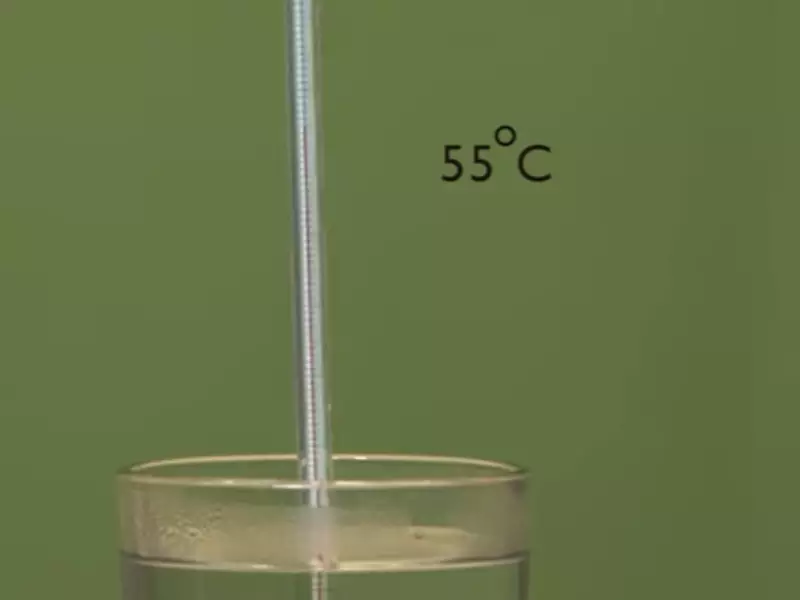Wells have been central to human civilization, supplying freshwater for various needs. The temperature of this water isn’t always consistent, and the depth of the well plays a vital role in this aspect. For those relying on wells for water supply, the temperature of the well water can be of significant interest.
Shallow and deep wells have distinct temperature profiles. While shallow wells are more prone to external temperature influences, deep wells exhibit a remarkable stability, often linked to the earth’s geothermal gradients.
Water temperature can impact both the quality of the water and the well’s infrastructure. Recognizing the factors that affect these temperatures is essential for optimal well management.
Basics of Well Depths
Definition of Shallow and Deep Wells
Both shallow and deep wells serve the primary purpose of extracting groundwater, but they differentiate based on their penetration into the earth’s crust.
Shallow wells: generally tap into the water table and may vary from 20 to 50 feet in depth. They are often more susceptible to external influences, drawing water from sources near the surface. This could include aquifers replenished by recent rainfall or streams.
Deep wells: on the contrary, penetrate significantly deeper into the earth. Depths can range from 100 feet to 500 feet or even more, accessing deep-seated aquifers. These aquifers are typically isolated from surface conditions, ensuring a more consistent quality and temperature of water.

Factors Affecting Well Depth
The decision to opt for a shallow or deep well is influenced by several key considerations:
- Local Groundwater Levels: In areas where the water table is high, shallow wells might suffice. However, in arid or elevated regions where the water table is deep, deeper wells become a necessity.
- Water Quality and Quantity Requirements: Shallow wells, being closer to the surface, can sometimes be at risk of contamination from surface runoffs. If water purity is paramount, deeper wells, which tap into isolated aquifers, may be preferable.
- Soil and Geological Considerations: The underlying geology can impact well depth. For instance, in rocky terrains, drilling deep might be challenging, while in sandy or clayey regions, the depth might vary based on the water retention capacity of the soil.
Temperature Dynamics in Wells
Earth’s Natural Insulation
One of the Earth’s remarkable traits is its ability to regulate temperature, acting as a formidable insulator. This insulating quality ensures that the surface’s temperature extremes, be it the biting cold of winter or the scorching heat of summer, do not immediately impact the ground below. This depth-based gradient is why basements often feel cooler in summers and warmer in winters compared to the surface.
Ground Temperature Stabilization
Past a certain depth, the Earth ceases to feel the direct impact of seasonal temperature fluctuations. This zone, known as the ‘thermally steady zone’, usually begins about 20 feet below the ground and extends deeper. In this zone, the temperature remains relatively constant, averaging out the yearly highs and lows. It’s this principle that some green buildings exploit for natural air conditioning and heating.
Shallow Wells: Temperature Profile
Depth Range and Characteristics
Being closer to the surface, shallow wells are greatly influenced by the ongoing surface conditions. As seasons change, so does the temperature of the water in these wells. Their proximity to the ever-changing surface environment makes them dynamic in their temperature profile.
Temperature Variations: Seasonal Impact
As seasons transition, the groundwater in shallow wells responds. During the summer months, the top layer of the Earth absorbs more heat, causing the water in shallow wells to warm up. Conversely, in the winter months, the surface cools down, and this cold seeps into the shallow depths, cooling the water.

Common Reasons for Temperature Fluctuations
- Proximity to Surface Water Sources: If a well is near a stream, pond, or other water bodies, it might draw water that’s influenced by the temperature of that source.
- Ground Cover Variations: The type of ground cover, whether it’s grass, concrete, or asphalt, can influence how heat is absorbed and radiated back, impacting the shallow well beneath.
- Rainfall and Climatic Events: Heavy rainfall can cool down the ground quickly, especially if the rainwater is cold. Conversely, prolonged sunny days can cause gradual warming.
Deep Wells: Delving Deeper
Typical Depth and Features
While shallow wells mirror the changing world above them, deep wells tell a story of Earth’s consistent core. Ranging between 100 to 500 feet, or more in some cases, these wells tap into the deep recesses of the planet. Their water source is often ancient aquifers, shielded from the transient conditions of the surface.
Stability in Temperature: Why It’s Different
The very depth that sets deep wells apart also lends them their temperature stability. Surrounded by layers of earth that remain thermally steady, the water in deep wells doesn’t experience the same fluctuations as its shallow counterpart.
Impact of Geothermal Gradients
Our planet is a furnace at its core, radiating heat outwards. While this geothermal heat doesn’t overtly affect shallow wells, deep wells, especially those approaching the 500-foot mark, might exhibit signs of this warmth. This natural gradient causes a slight but consistent increase in temperature as one goes deeper.
Importance of Temperature Monitoring
Protecting Well Components
Well components, especially pumps, have optimal operating temperatures. Monitoring ensures that these components aren’t subjected to temperatures that could compromise their functionality or lifespan.
Enhancing Water Quality
Temperature can influence water quality. Elevated temperatures can promote bacterial growth, which might necessitate water treatment solutions.
Predictive Maintenance and Longevity
Regular temperature checks can predict potential issues, allowing for timely interventions and extending the life of the well.
Challenges in Maintaining Optimal Temperatures
External Influences: Climate and Topography
The region’s climate and the topography can play a significant role. Areas with extreme temperature variations or unique geological features might pose challenges in maintaining optimal well temperatures.
Human Activities: Overdrawing and Pollution
Drawing excessive water or pollutants entering the well can alter the temperature. Sustainable use and protective measures are key to preventing such challenges.
Adapting to Temperature Changes
Techniques to Stabilize Temperature
- Insulating the well cap or cover
- Landscaping techniques to shade the well area
- Using geothermal heat pumps for deep wells
Equipment and Technology Solutions
Modern technology offers tools to monitor and control well temperatures effectively. Instruments like thermometers and sensors combined with automatic controls can play a crucial role in adapting to temperature changes.
Frequently Asked Questions
Why is my shallow well water so cold in the summer?
Even in summer, shallow wells can pull from groundwater that remains at a steady temperature below the surface. This water can feel cold compared to the warm summer air.
How does geothermal activity impact deep well temperatures?
In areas with significant geothermal activity, deep wells might tap into water that’s been heated by the Earth’s mantle. This can result in warmer than expected water temperatures.
Can human activity near the well influence its temperature?
Yes, activities like deforestation, land clearing, or even excessive water drawing can alter the temperature of the water in the well.
Conclusion
The temperature of well water, whether from shallow or deep sources, has implications that extend beyond mere comfort. It influences well infrastructure, water quality, and overall management strategies.
Awareness of how different factors, from geothermal gradients to human activities, impact these temperatures can aid in making informed decisions. With the right knowledge and tools, one can ensure that well water serves its purpose effectively while maintaining its integrity for years to come.